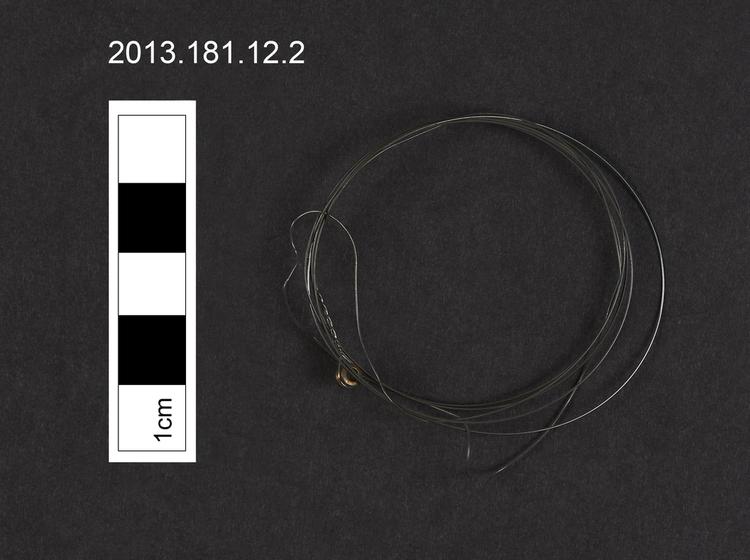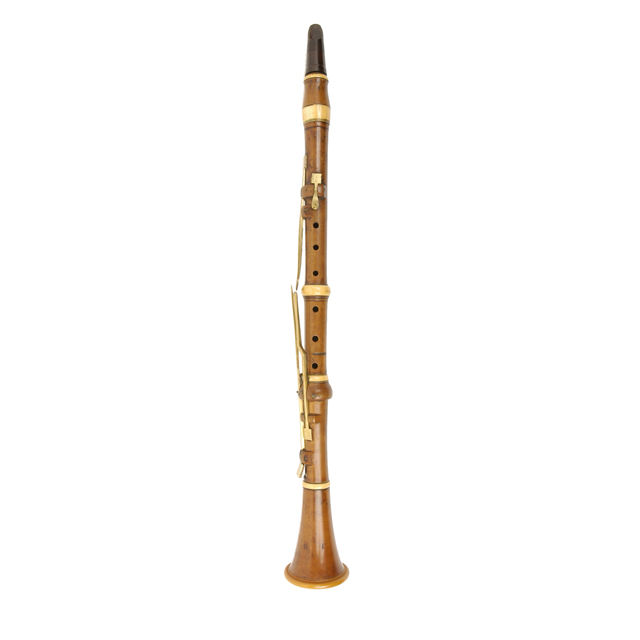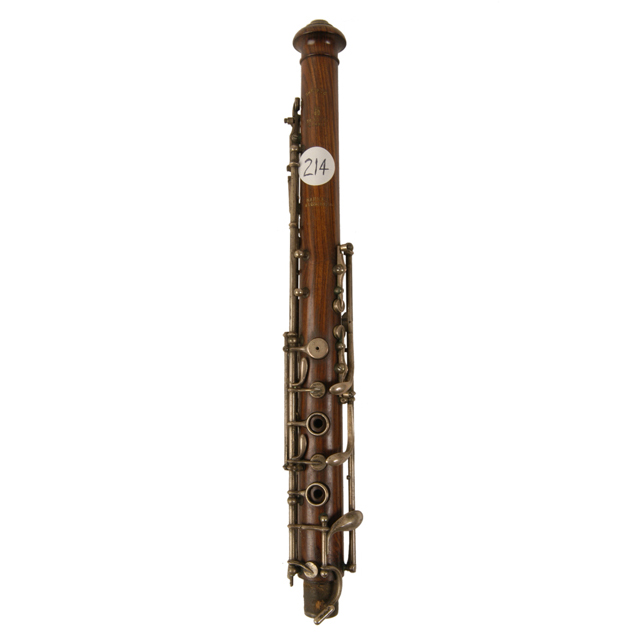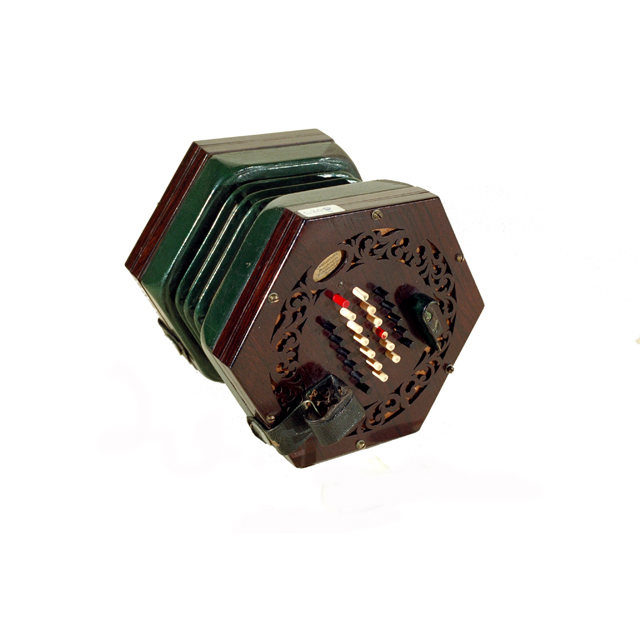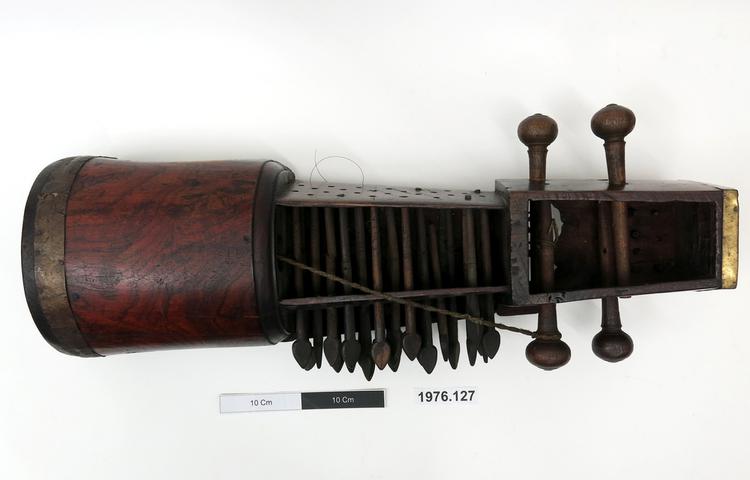
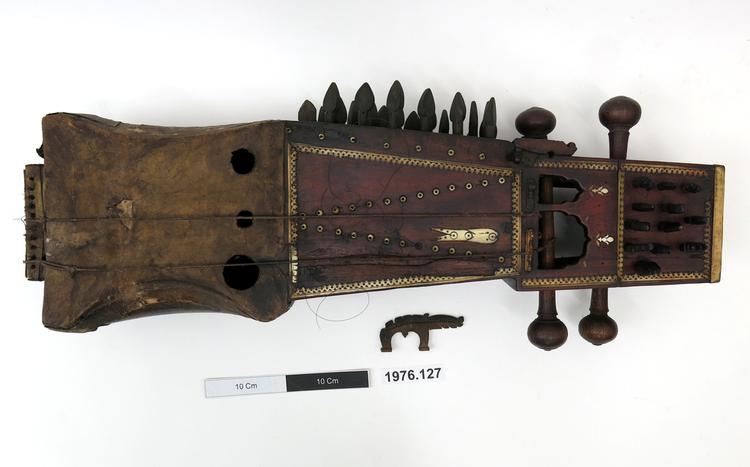
Hindustani Sarangi, fiddle, with bow. The body, neck and peg-box carved from a single piece of red-brown wood. Skin sound table with three soundholes. Four large pegs for (3) bowed strings are set laterally into the pegbox, while 12 pegs for wire sympathetic strings enter its top face. The neck is inlaid with an ivory border and an ivory fish motif. The neck was originally pegged for 33 wire sympathetic strings, 3 pegs are now missing. These strings ran through 33 holes, bushed with ivory and arranged in 3 rows, in the front of the neck . There were also originally two pegs (now one) for two further wire strings, one set into the the top face of the neck on the player's right, and the other above it set into a block of wood attached to the neck. All the strings are attached to a large pierced block projecting from the base of the instrument, which acts as a tailpiece. A curved bridge projects towards the player's right hand side and is drilled to carry the sympathetic strings. There is an inscription in Devanagari (?) script on a brass plate on top of the pegbox. The bow is a round black stick with the wooden frog covered with red cloth and bound with string. Acquired: small attached label reads HWH.



